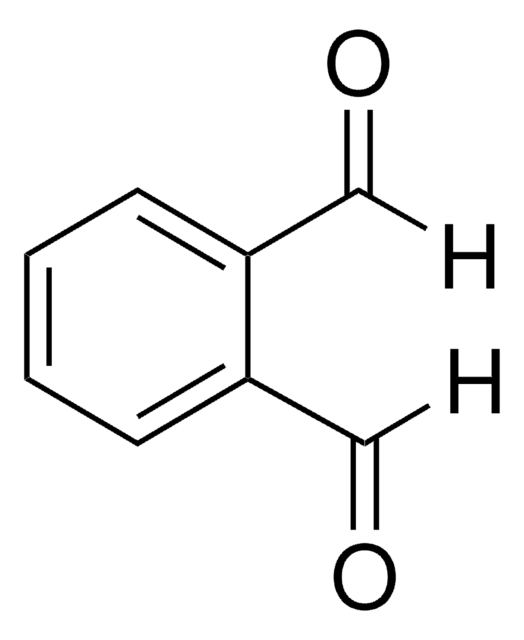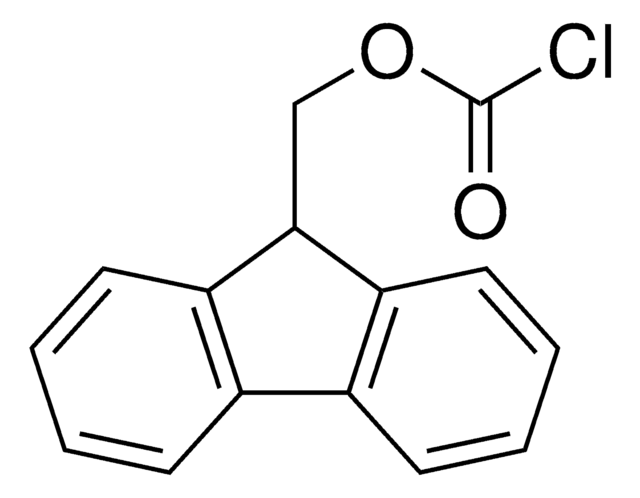79760
Phthaldialdéhyde
for fluorescence, ≥99.0% (HPLC)
Synonyme(s) :
Dicarboxaldéhyde o-phtalique, o-Phthalaldéhyde, Benzène-1,2-dicarboxaldéhyde, OPA
About This Item
Produits recommandés
Qualité
for fluorescence
Niveau de qualité
Pureté
≥99.0% (HPLC)
Forme
solid
Impuretés
≤0.5% phthalic acid
Pf
54-56 °C
Fluorescence
λex 334 nm; λem 455 nm (Thiol Adduct)
λex 340 nm; λem 450 nm in reaction buffer (with glycine)
Température de stockage
2-8°C
Chaîne SMILES
O=Cc1ccccc1C=O
InChI
1S/C8H6O2/c9-5-7-3-1-2-4-8(7)6-10/h1-6H
Clé InChI
ZWLUXSQADUDCSB-UHFFFAOYSA-N
Vous recherchez des produits similaires ? Visite Guide de comparaison des produits
Description générale
Application
Actions biochimiques/physiologiques
Mention d'avertissement
Danger
Mentions de danger
Classification des risques
Acute Tox. 3 Oral - Aquatic Acute 1 - Aquatic Chronic 1 - Eye Dam. 1 - Skin Corr. 1B - Skin Sens. 1 - STOT SE 3
Organes cibles
Respiratory system
Code de la classe de stockage
6.1A - Combustible acute toxic Cat. 1 and 2 / very toxic hazardous materials
Classe de danger pour l'eau (WGK)
WGK 3
Point d'éclair (°F)
269.6 °F - closed cup
Point d'éclair (°C)
132 °C - closed cup
Équipement de protection individuelle
Faceshields, Gloves, Goggles, type ABEK (EN14387) respirator filter
Certificats d'analyse (COA)
Recherchez un Certificats d'analyse (COA) en saisissant le numéro de lot du produit. Les numéros de lot figurent sur l'étiquette du produit après les mots "Lot" ou "Batch".
Déjà en possession de ce produit ?
Retrouvez la documentation relative aux produits que vous avez récemment achetés dans la Bibliothèque de documents.
Les clients ont également consulté
Notre équipe de scientifiques dispose d'une expérience dans tous les secteurs de la recherche, notamment en sciences de la vie, science des matériaux, synthèse chimique, chromatographie, analyse et dans de nombreux autres domaines..
Contacter notre Service technique







